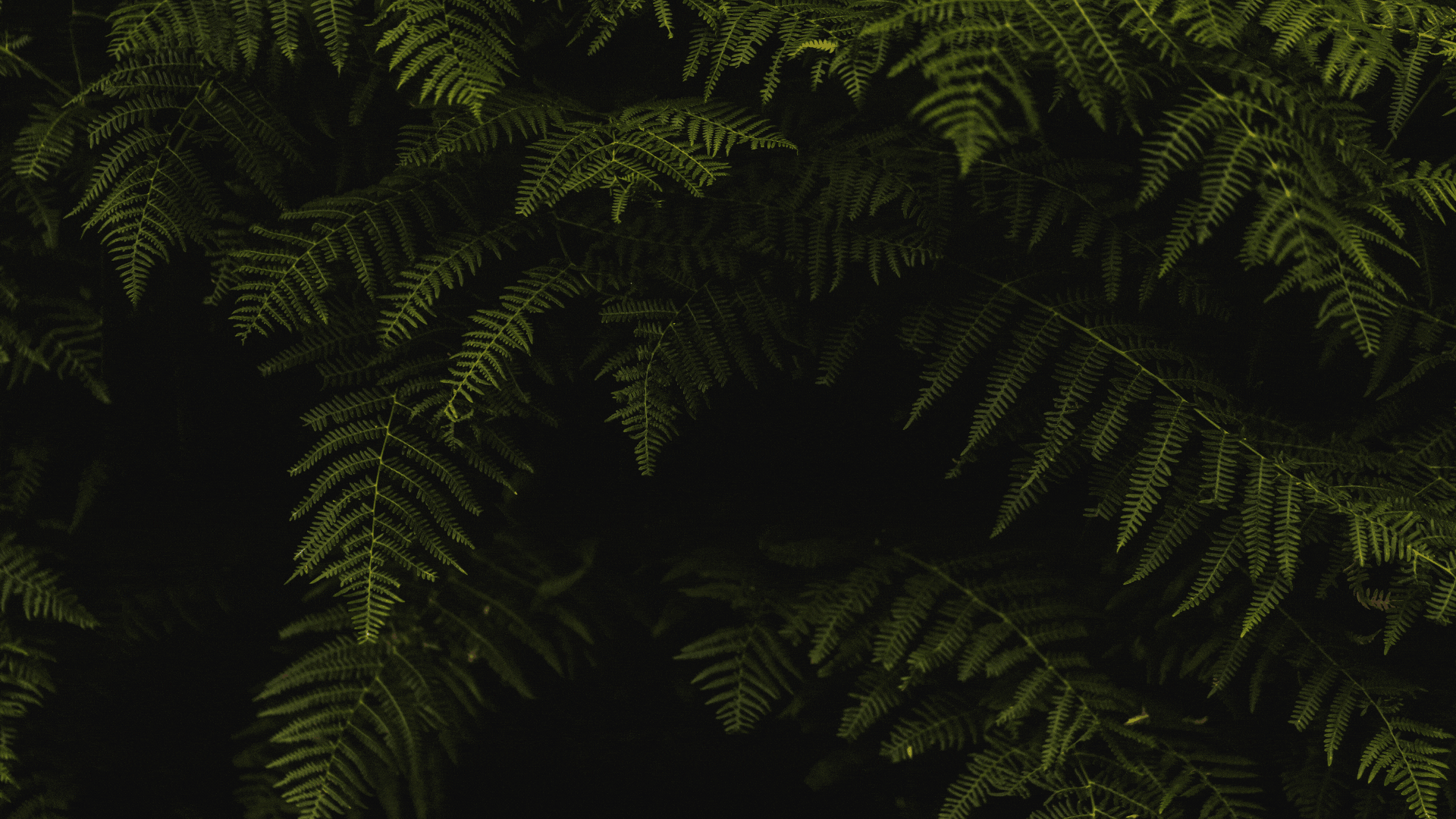 Poison Sumac, or Toxicodendron vernix, is a common North American plant that causes skin irritation to people. Like its better-known cousin poison ivy, the green leaves of poison sumac sure to put a damper on an otherwise pleasant camping trip or another outdoor excursion. Poison sumac also goes by the name thunderwood in the southeastern US.
Poison Sumac, or Toxicodendron vernix, is a common North American plant that causes skin irritation to people. Like its better-known cousin poison ivy, the green leaves of poison sumac sure to put a damper on an otherwise pleasant camping trip or another outdoor excursion. Poison sumac also goes by the name thunderwood in the southeastern US.
Poison sumac is toxic thanks to the compound called urushiol, which is found in all parts of the plant. Urushil irritates the skin and mucous membranes of people. It’s particularly dangerous to burn poison sumac, because urushiol can aerosolize and cause severe damage to your lungs.
IDENTIFY NEW PLANTS WITH PLANTSNAP
Thanks to slight differences in the chemical composition of urushiol, poison sumac is more toxic than poison ivy or poison oak. Exposure leads to redness, contact dermatitis, itching, blisters, swelling, and a burning sensation.
Learn more about identification, removal, and treatment of poison sumac below.
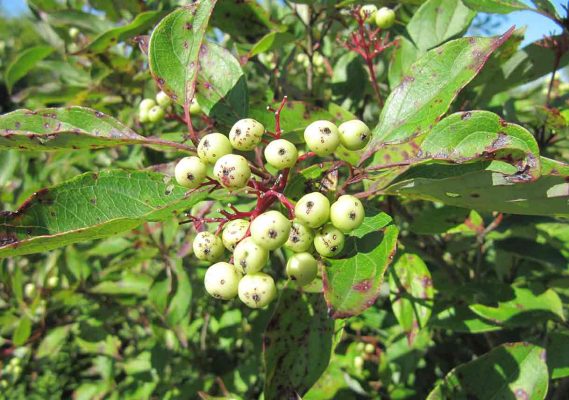
Poison sumac white berries. Image courtesy of Best Pick Reports.
How to Identify Poison Sumac
Poison sumac is a small tree that grows to about 30 feet tall (that’s about three times as tall as your average Christmas tree). It has pinnate leaves, like a fern’s leaf or a feather. Each pinnate leaf has 9 to 13 leaflets on it, which are stationed opposite each other.
The green leaves are shaped like pointy, tapered ovals and may have peachlike fuzz on the underside. The stems of the leaf are reddish, but the bark of the rest of the plant is greyish.
Poison sumac has berry-like fruits that grow in loose clusters. They are white and each is 4-5 millimeters across.
Poison sumac has many lookalikes that are also in the sumac family. Let’s break down the lookalikes and how to tell which sumac you’re looking at:
- Staghorn sumac has similar leaf arrangement to poison sumac but it has fuzzy fruit and stems. The fruits are generally red.
- Smooth sumac has smooth stems, like poison sumac. However, its berries grow in dense clustered spikes rather than the looser arrangement found in poison sumac.
- Shining sumac is easily identified by its grooved stems between the leaflets. This stem configuration is quite distinctive once you notice it – it looks like it has been given grooves. Poison sumac has smooth, round stems.
- Tree of Heaven (not a sumac at all) has leaves with notches around the base, while poison sumac has smooth leaves. Tree of Heaven also does not produce berry clusters like the sumacs.
If you’re confused, it’s generally easy to identify poison sumac by its habitat as well.
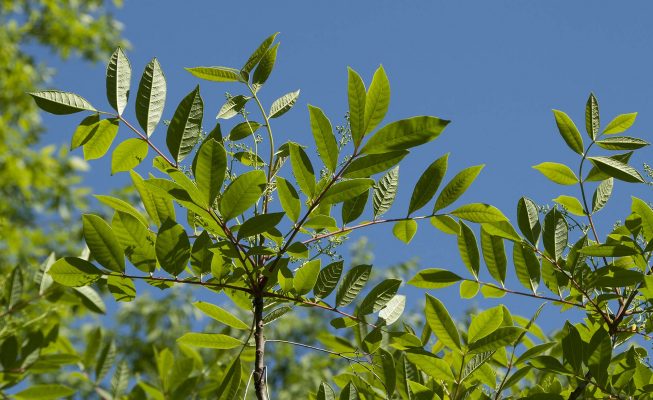
Where Does Poison Sumac Grow?
Poison sumac is mostly found in wet, swampy areas with clay-like soil. That’s a good thing, because that means most of us won’t run into it along our day-to-day adventures (unlike pernicious poison ivy, which grows just about anywhere).
Poison sumac is mostly found along the coasts of North America, with big patches just south of Tennessee and in the states surrounding Massachusetts. It is occasionally found in the farthest southeast portions of Canada.
How Can I Get Rid of Poison Sumac?
If poison sumac is growing on your property and you want to remove it, you’re in for a chore. Since it is more dangerous than other poisonous plants like poison ivy or poison oak (and it’s a decent-sized tree), it’s generally best to hire a professional.
Any attempts at removing poison sumac are risky because you are likely to expose yourself to the urushiol. As stated above, burning it is a bad idea. It’s possible that breathing the smoke from burned poison sumac is fatal, though we couldn’t find any reports of actual deaths.
If you do decide to remove poison sumac on your own (which, again, we don’t recommend), it’s a lengthy process:
- Make sure you’ve identified the target. Then plan your removal for a dry, windless day.
- Gear up. You’ll want eye protection, a mask, and long clothing or rubber gloves and boots over every inch of skin.
- Cut the plant at ground level using shears or a saw.
- Treat the remaining base using a chemical herbicide such as Roundup. We don’t always love using these big-boy chemicals, but this plant is no joke. This is not the time to play nice with nature!
- If your infestation is small, you might want to dig up the roots. However, this can be tricky with an adult plant.
- Dispose of the plant properly. You should not burn poison sumac or put it in the compost. Instead, put it in black plastic trash bags and then check with your municipality to see if they allow it in the dump.
- Disinfect your clothing and tools. Rinse tools with rubbing alcohol, then oil the joints after they’ve dried. Wash your gloves before removing your clothing, then use the gloves to take off all of your clothing. Wash all of this immediately, then wash your gloves again. Take a shower afterward.
You’ll likely need to repeat this process several times to eradicate the plants. It’s generally easier to leave poison sumac alone if it’s in a remote part of your property — removal is quite difficult!

How Do I Treat Poison Sumac Rashes?
If you think you might have come into contact with poison sumac, rinse the area with lots of cool water and dish soap or rubbing alcohol as soon as possible. This might help remove some of the urushiol before it reacts with your skin and helps prevent its spread.
Once you’re having a reaction from contact with the plants there’s not much you can do to cure it. However, you can treat the symptoms. The rash generally takes about a month to disappear.
Over-the-counter remedies for poison sumac include calamine lotion, hydrocortisone creams, antihistamines like Benadryl, and topical anesthetics.
If your eyes are swelling shut, your poison sumac reaction covers more than 30% of your body, you have a fever, or the reaction is on your face or genitals, get help from a doctor. Call 911 or go to an emergency room if you’re having trouble breathing.
Scratching the affected area can lead to infection, especially if your scratching pops your blisters. This can lead to nasty scarring and prolong your suffering.
How did you react to your poison sumac experience? Share your ID tips and stories below.
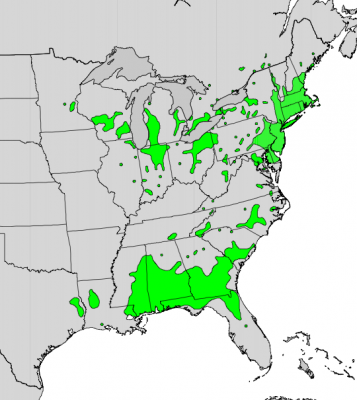











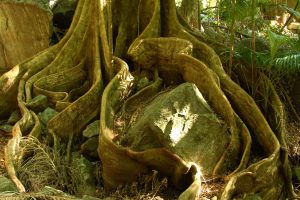

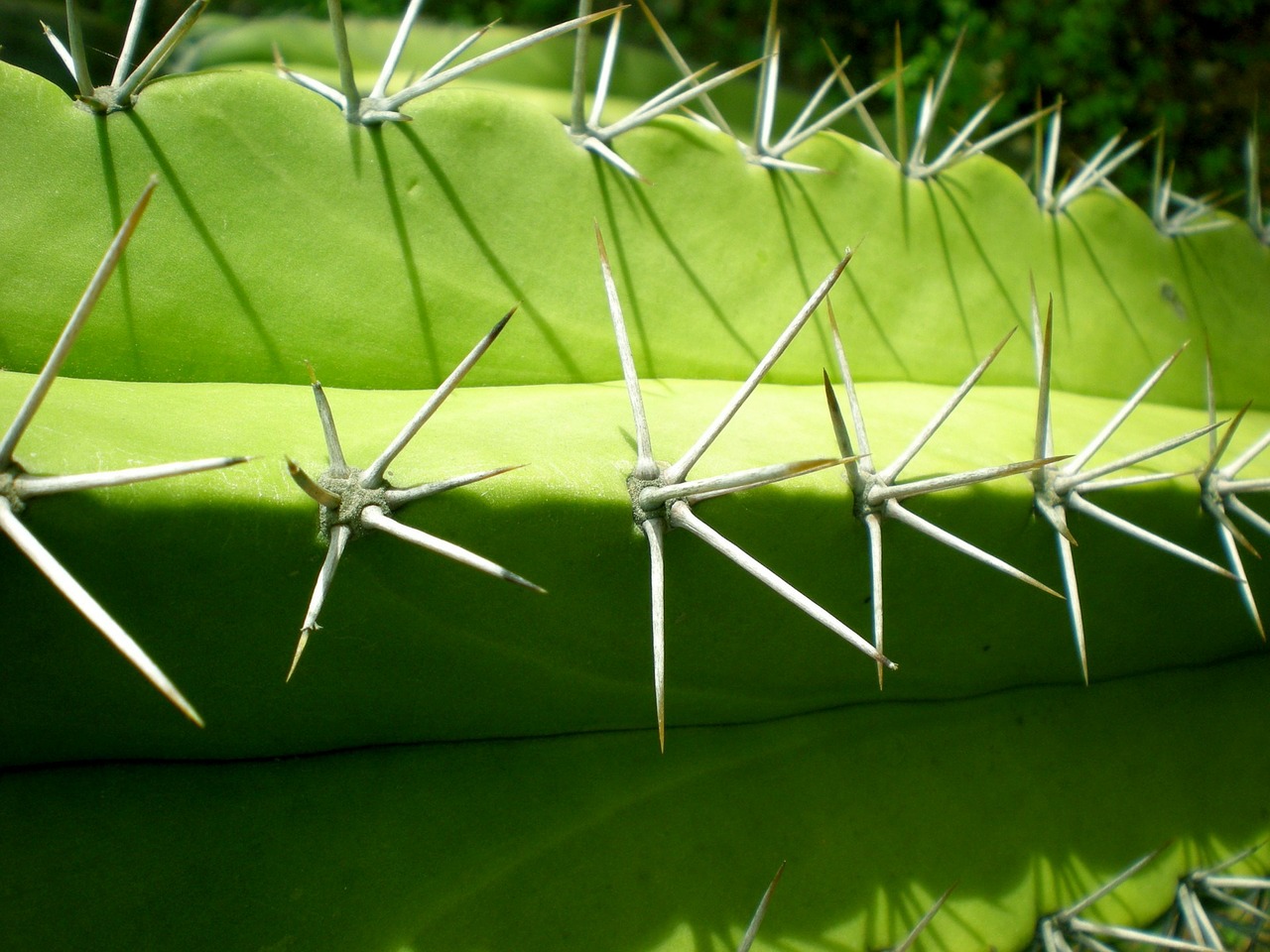
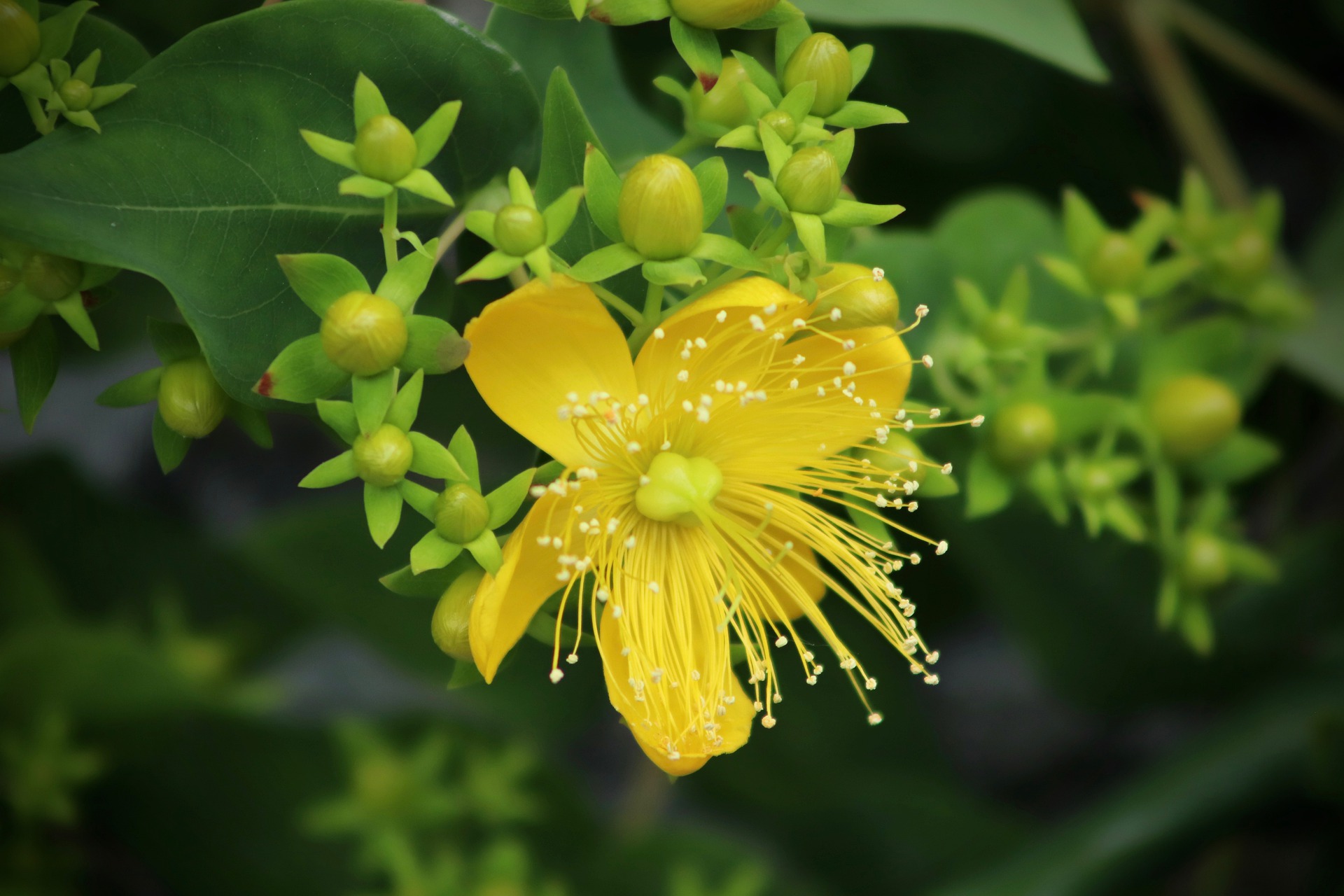

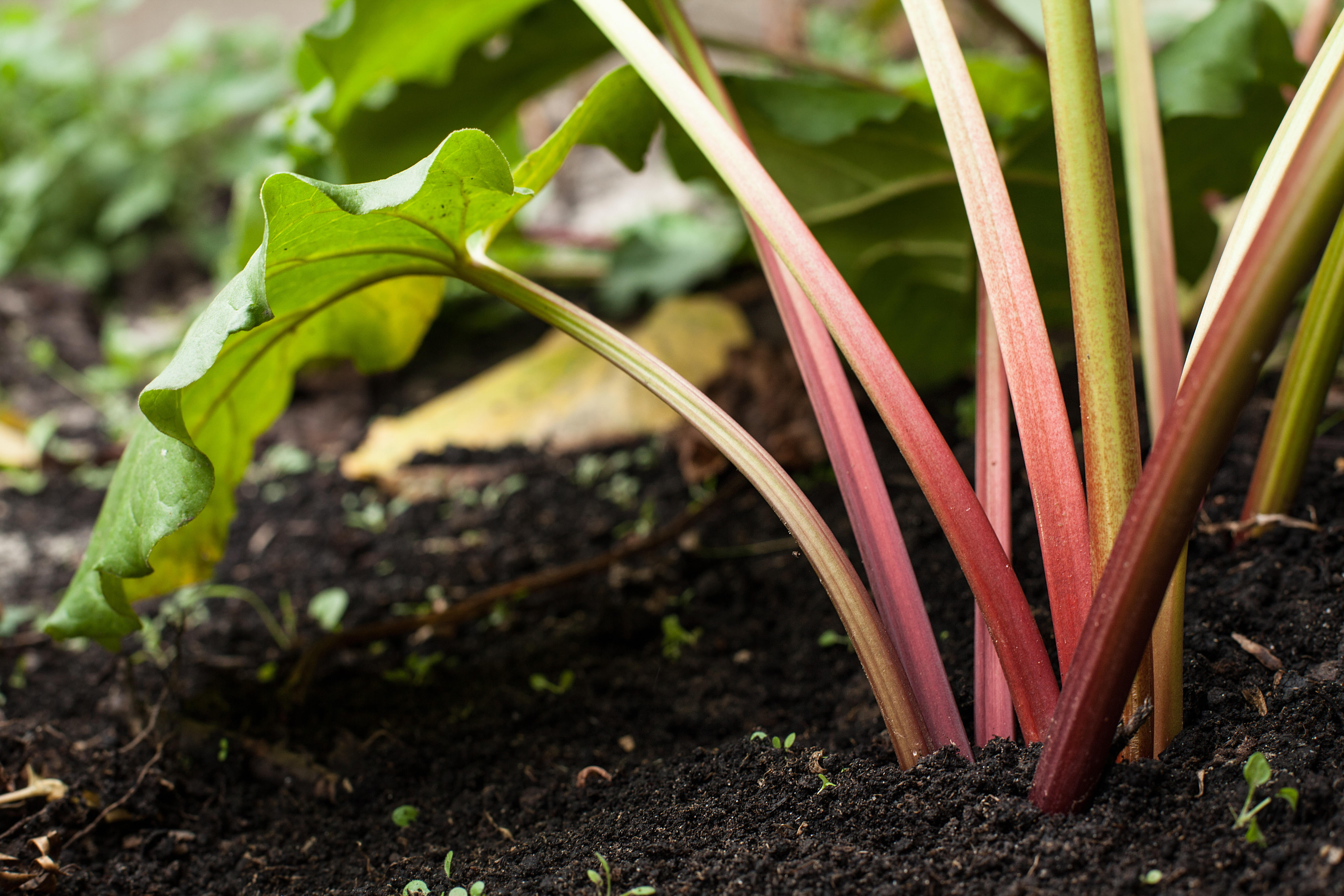



I use Dawn detergent as soon as I am aware of exposure to poison sumac (or poison ivy). Put it on thick and let is soak for a couple of minutes before rinsing off with water – not in the kitchen sink! Use a hose outside or utility sink. Sometimes a second “Dawn bath” in the shower is necessary. Be careful with your eyes!
Secondary treatment, if rash and itching develop, is a product I buy at CVS – Ivarest. works pretty good.
I live in an area infested with poison sumac and after trying to eradicate it for 2 consecutive summers, I needed a better solution tham calamine, rubbing alcohol or cortisone. All useless and I have the scars to prove it. This summer I used Technu pre contact gel and it worked. I was able to cut down hundreds of trees with no reaction and I was working in a sleeveless shirt and shorts.
I don’t know if it was sumac or poison oak because I was walking around an old cemetery, pushing branches of a tree aside with my bare arms at about noon time. By six o clock that night my arms were burning. Soon blisters appeared and started oozing. I wrapped both arms with gauze and put plastic bags on to halt the spread. By noon the next day it was obviously worse. I went to a walk in clinic and showed them. I was given one injection and in just a few hours the itching, burning had stopped and the blisters began to dry up. I could not believe how fast it spread and then how fast it was going away. So I say don’t suffer for weeks with that stuff, go to immediate care and get a shot.
how do i find a professional to get fid of this poison sumac bush that is right outside of my front door. we cut it down twice and it keeps coming back.
I bought a house last summer was the first summer, did a lot of yard work and broke out in a serious rash which turned out to be an allergic reaction. I didn’t know which poisonous plants but identified and eradicated poison ivy. Ended up in ER 3x’s, admitted 2x’s all in one month, and missed a month of work. Now, I check my yard daily and now see poison ivy starting to grow, and I have one 8 ft poison sumac tree, and certain there are several smaller ones in the back of my property. I will gearing up to take them down while it’s early.
We got into sumac in my yard. Miserable rash with burning on my hands the first day. Later turned into hives on my face and sides. Nothing OTC lasted for long. I eventually got to urgent care the next day and prednisone seems to be helping.
I have this kind of reaction to what I’ve always though was poison sumac but has no white fruit. The only fruit I’ve seen on this property since Th e 1960s is smooth. I had a wild full body reaction like you indicate as a kid. Now even covered head to fit I can get a rash when clearing now as an adult. Maybe I’ve got super sensitive skin. I tent to breakout from other things too that others might not. I try to stay clear.
I came in contact with the nasty plant growing in a landscape area by our front door on July 2. I suffered for over a week with only a steroid cream a dermatologist had prescribed last year for a poison ivy exposure. It didn’t help much. After a week, I found some relief from Benadryl spray. After 2 weeks of suffering I saw a dermatologist again. This time she prescribed an oral steroid. I felt the itching subside with in 4 hours and haven’t been itching since. IF it ever happens again, I’m going straight for the steroid.
I have this in contained pot. When do I prune it? Hasn’t poisoned either cats, dogs, me – yet!
There are 2 non=poison types of sumac. I suspect your is one of those. I wouldn’t prune it, at all, until you know. Otherwise, it’s the bruising of the plant that releases the oils which cause the horrendous rashy sores. You do not want to chance getting that. It’s awful.
I have gotten poison sumac the last two years. I had never contracted it before then and I am 66. Apparently, most of the trees/bushes behind my new condo are poison sumac and I did not know it. I was familiar with poison ivy and poison oak, but did not know that, what appeared to be a pretty bush with little white flowers on it, was actually poison sumac. I know NOW. The only thing I found that stops the rash from spreading is Zanfel. It is very expensive ($35-45) for one tube, but that covers a wide are of skin and it is totally worth it. My rash is still itchy, so I need to take Benadryl for the itch, but at least it washes off the urushiol and prevents it from spreading and scarring.
I have it all over my property, acres of woodsy land with some marsh and clay. We have trails all over the property. We are building a house. I want to get rid of it along the trails that we are cutting. My dog loves running through the brush chasing things so I’m afraid I’m going to have to take the herbicide route as much as hate chemicals. I’m going to need gallons of this stuff and a way to transport the spreading of it. Ugh.
I’m going to try a clove oil product instead of Roundup. I can’t bring myself to use that stuff on our woodlands. It’s killed regular weeds so I’m going to give it the wild sumac test. You can get a gallon jug delivered from Amoz.
I have it now. My doctor gave me steroid creme and pils and they help somewhat.
Best remedy is HOT shower on the rash until it stops tingling.
Do not burn the skin. I get immediate relief.
Then normal soap shower. I do this before bedtime soI can sleep.
Carry a bottle of rubbing alcohol for temporary traveling relief.
Icy-hot (or generic) also brings lesser relief.
Calamine does not seem to work as well
My boyfriend catches that pretty regularly. And he does lots of scratching.
He doesn’t like to take medication. Please for sny other remedy you may have
I was informed by the Iowa DNT that poison Sumac does not grow in Iowa, False!!! I encountered it in the middle of Iowa’s second largest city (Cedar Rapids) under the worst conditions. Shirt off, hot and humid day, helping an elderly neighbor trim back her lilac tree so her tv reception would come in clearer. Never seen poison Sumac before and no idea what it looked like. I was covered head to toe, eyes swelled shut and my own brother didn’t recognize me. Worst reaction to anything I have ever encountered.
I always have serious reactions to poison sumac. I catch it several times a year. I have finally found something that has completely stopped my visits to the doctor. Young Living has “purification” oil. I rub it directly on my affected areas and get relief quickly, with it usually being gone within a week. Please note that it cannot be used on the eyes. It also works on my husband as well as several of our friends. No more shots, prescription drugs, or prescription creams.
Dawn liquid soap
Where is this oil available?
Think I came in contact with Sumac, thinking it was a cute little plant. Ha!
Was trying to weed around newly planted Dahlias and other plants which are perennials. Brushed against a small plant which had tiny thorns. Next day it was sore. Then yesterday my beautiful sweet Siamese cat bit me when I was trying to put his harness on. This morning when I woke up my hand was red, swollen and felt warm Don’t want to take chances since I had Cellulitis in other hand this past January. Pretty serious. ER referred me to Orthopedic Hand Surgeon. Advice?